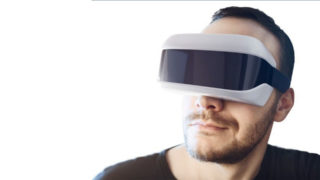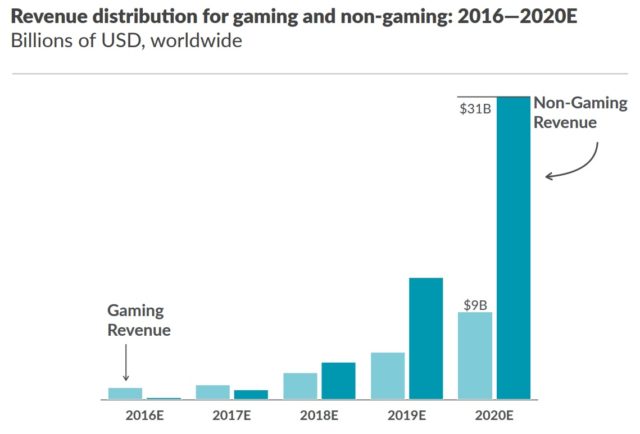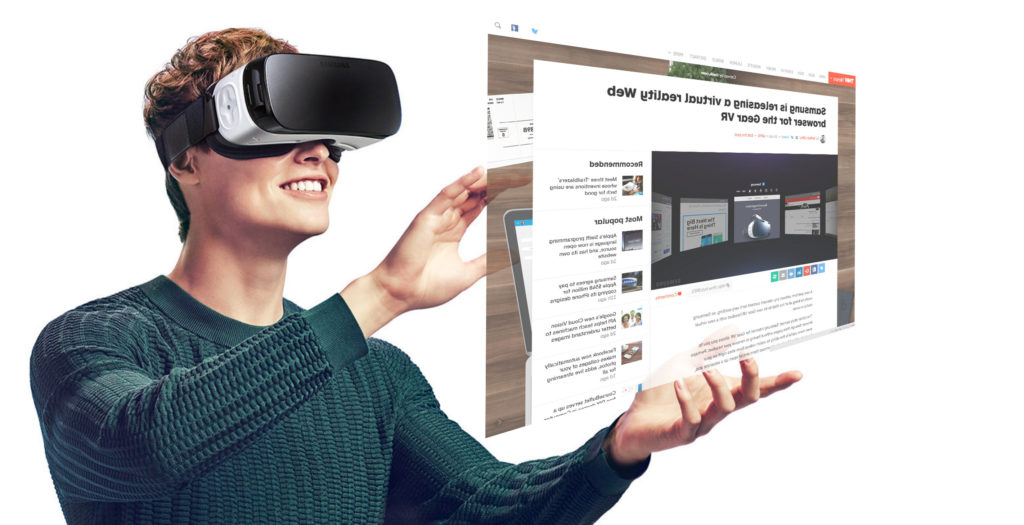Following Google’s big Pixel and Daydream View reveal on Tuesday, Oculus Connect currently underway, and press reviews pouring in for the Playstation VR, virtual reality markets are poised to attract holiday shoppers in a big way. When it comes to a rising technology like virtual, augmented and mixed reality, however, there is a need to play “the long game,” appealing to multiple markets and industries for many years and innovations to come. Thanks to gamers, virtual reality might actually take hold.
A new Juniper Research study predicts that hardware revenues from VR headsets, peripherals and 360-degree cameras will reach over $50 billion by 2021, up tenfold from an estimated $5 billion in sales this year. This rapid growth, Juniper predicts, will arise from a widespread adoption of VR by smartphone users as well as high prices for VR headsets. While the cost for “holder” headsets (used for smartphone VR), estimated to remain low, more sophisticated platforms like Google Daydream are projected to produce more moderate revenues in the short term.

SuperData Research estimates Google Daydream sales to reach $450,000 by the end of the year and continue on an upward track to $14 million by the end of 2020. As a whole, the company forecasts a total market for virtual, augmented and mixed reality gaming to reach $8.8 billion globally, which will lead to applications in other fields. In fact, the non-gaming market for this technology is estimated to far exceed that of gaming by the tune of $31 billion. The fashion industry, for example, has adopted the use of VR and 360-degree video for years and will no doubt find new ways to implement the technology as it becomes more sophisticated. The New York Times offers a variety of documentaries and reporting in VR, as well, a practice that may soon become commonplace.
While the use of virtual, augmented and mixed reality is limited only to the imagination (and technological advancement), being new and exciting is never a guarantee of long term success. SuperData noted the importance of variety in where and how consumers can experience the technology.
“Critical during this initial adoption phase will be the ability to establish a rich ecosystem of content providers that in turn will bear the fruit of VR and deliver on its promise,” SuperData said in a statement. “Because of that we expect a seasoned participant like Sony to do well during this initial stage, reaching an install base of around 2.6 million units by year’s end. The strategy of both HTC Vive and Oculus Rift to pursue the high-end VR market is a longer game, especially considering the initial issues Oculus suffered during its retail rollout.”
Could the market really jump that high in a relatively short amount of time? When you think about the market for cell phones just a few years ago, it’s easy to understand the explosive power of technology that advances in a short amount of time. If VR becomes an integrated part of everyday life, it’s perfectly reasonable to predict growth of this magnitude. After all, who ever imagined that pagers would cease to be cool? Trust me, we were cool.


